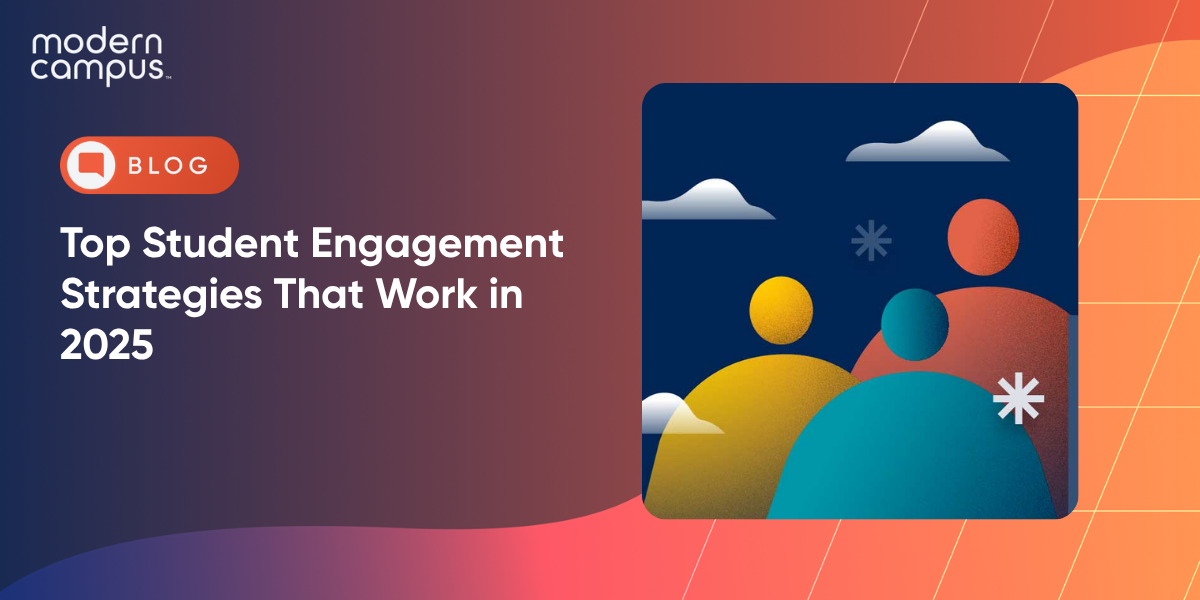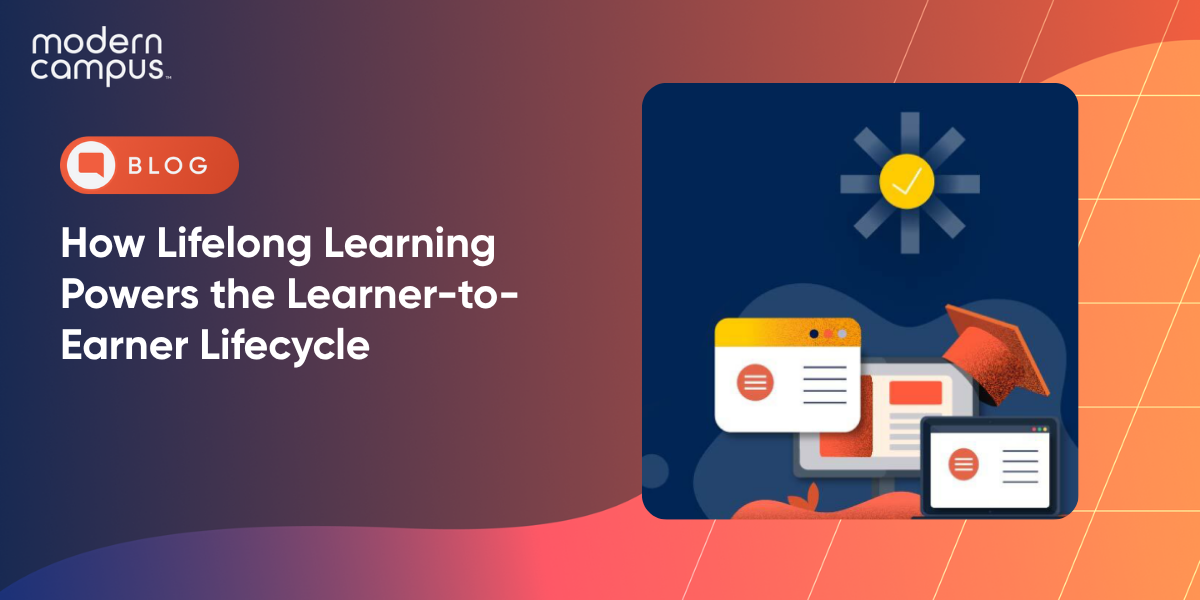Top Student Engagement Strategies That Work in 2025
Student engagement is the cornerstone of institutional success. Institutions implementing strategic engagement approaches see remarkable results.
- AI-powered personalization increases inquiry conversions.
- Data-driven early warning systems identify at-risk students.
- Technology-enhanced communication boosts retention rates.
Embrace a comprehensive, technology-enabled engagement strategy that personalizes every touchpoint of the student journey.
With a reported 60% of students feeling lonely and enrollment numbers still in recovery mode, institutions can no longer rely on traditional approaches like mass email blasts or disjointed campus systems to keep students connected and motivated. Modern learners expect the same level of personalized, responsive digital experiences they receive from streaming platforms and e-commerce sites.
To meet these evolving expectations, forward-thinking institutions are embracing comprehensive engagement strategies that integrate technology, data and human connection. By creating more dynamic, learner-centered digital interactions, colleges and universities are improving student satisfaction, strengthening retention and building lasting relationships.
The goal is to offer meaningful connections that support students throughout their entire learner-to-earner journey. Here are the ten student engagement strategies that are proving most effective.
Why Student Engagement Strategies Are Essential
Student engagement has shifted to a core institutional priority. With changing learner demographics, heightened demands for personalized experiences and increasing scrutiny of higher ed outcomes, campuses are rethinking how they build connection and continuity for students both in and out of the classroom.
For example, roughly 72% of institutions now offer co-curricular engagement opportunities, including student government, volunteering and internships with local businesses or community organizations. These experiences help students feel part of the institution, build real-world skills and form meaningful networks, all of which contribute to persistence and satisfaction.
Students’ sense of belonging and community is strongly linked to retention and completion. Campuses that focus intentionally on inclusion and the wider student experience see meaningful gains in persistence, particularly among historically underserved student populations.
When institutions prioritise engagement–the visible and invisible touchpoints that shape how students relate to their institution–they're creating environments where students feel seen, supported and connected. That, in turn, strengthens the odds of enrollment continuity, on-time completion and positive post-college outcomes.
1. How Can AI-Powered Personalization Transform Student Experiences?
As institutions look to deepen student engagement, AI is already transforming daily operations. More than four out of five higher education faculty and staff are now using AI for at least one work-related task. By embedding AI and other learner engagement technology into workflows, institutions can intervene earlier and create more meaningful student connections.
AI-driven personalization works by analyzing student behavior, academic performance and engagement patterns to deliver a personalized student experience that connects learners with timely, tailored content and support. When students visit institutional websites, AI can surface relevant program information, highlight career pathways aligned with their interests and adjust the user interface based on their preferences.
The technology extends into the learning experience itself. Adaptive learning platforms powered by AI can customize coursework to fit individual student needs, automatically adjusting difficulty levels and providing supplementary resources based on comprehension patterns. Early intervention systems use machine learning to identify students who may be struggling before traditional metrics would reveal problems.
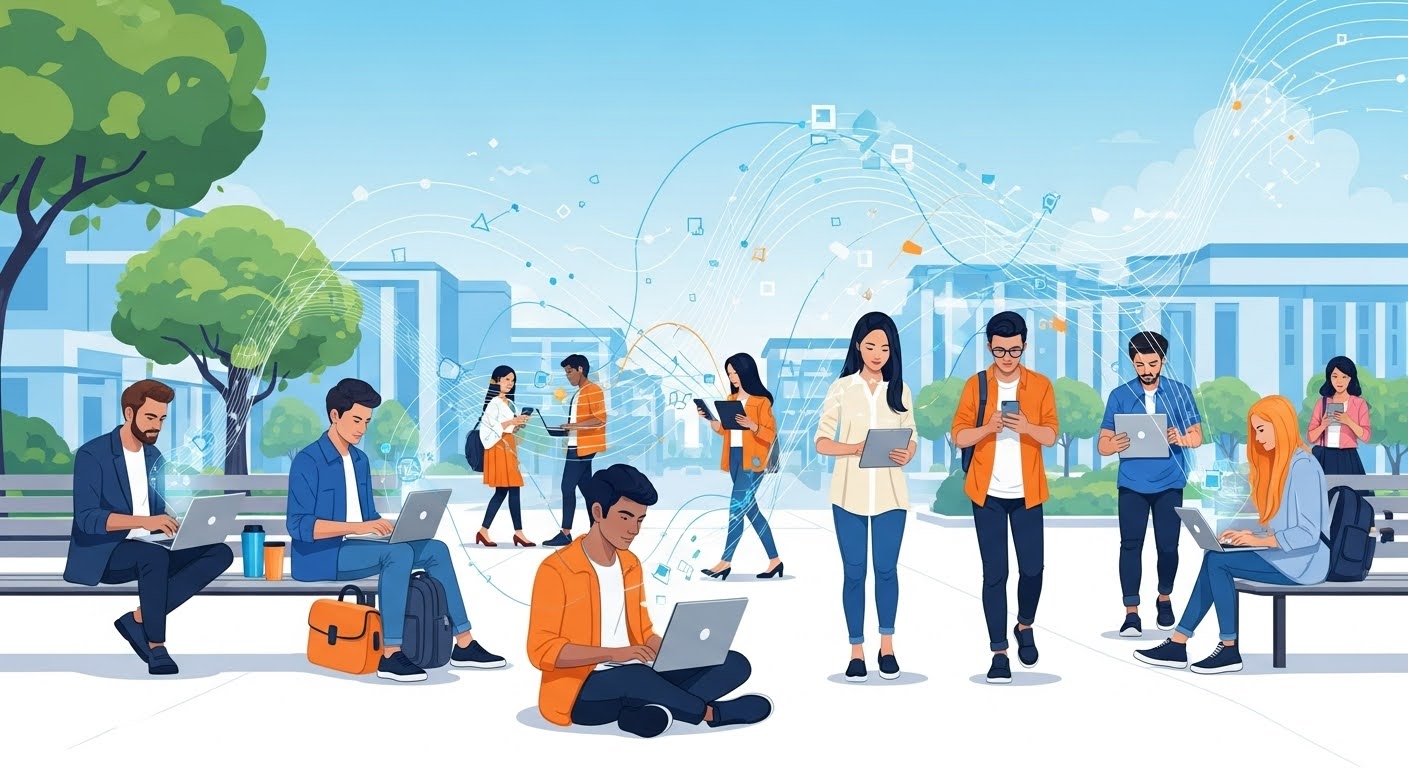
Implementation requires thoughtful integration with existing systems and careful attention to data privacy. However, institutions that successfully deploy AI personalization report dramatic improvements in student satisfaction and engagement metrics.
2. Why Are Data-Driven Early Warning Systems Critical for Student Retention?
Proactive intervention can make the difference between a student who thrives and one who withdraws. Modern early warning systems leverage comprehensive data analytics to identify at-risk students with remarkable accuracy, often detecting concerning patterns weeks or months before traditional indicators would surface.
These systems analyze multiple data points:
- Attendance patterns
- Assignment submission rates
- LMS engagement
- Financial aid status
- Social interaction metrics
Machine learning algorithms can predict which students are likely to struggle academically or consider leaving.
The power lies in timely, personalized interventions. When the system flags a student showing worrisome patterns, advisors receive actionable insights about specific areas of concern. This might trigger an automated check-in message, a referral to tutoring services or a personalized outreach from student support staff.

Successful implementation requires cross-departmental collaboration to ensure that when the system identifies at-risk students, there are clear protocols and resources available for intervention. The goal is to create a seamless support network that responds quickly and effectively.
3. How Does Conversational Technology Enhance Student Communication?
Students have grown up with instant, conversational digital communication, and they expect the same responsiveness from their institutions. Conversational technology, including AI chatbots, SMS messaging and interactive virtual assistants, meets students where they are and provides support when they need it most.
Text messaging campaigns show strong results, with institutions reporting improvements in enrollment completion rates and student satisfaction. Unlike email, which often goes unread, text message open rates were at 98% as of 2024, with response rates that surpass traditional communication methods.
Modern conversational systems go beyond basic question-and-answer functionality. They can guide students through complex processes, such as financial aid applications, course registration and degree planning. Advanced conversational tech integrates with student information systems to provide personalized responses based on individual student records.
The key to successful implementation is ensuring that conversational technology feels helpful rather than impersonal. The best systems seamlessly escalate complex issues to human staff while efficiently handling routine inquiries. This approach frees up staff time for high-touch interactions while ensuring students receive immediate responses to common questions.
4. What Role Does Gamification Play in Modern Student Engagement?
Gamification transforms routine academic activities into engaging, motivating experiences by incorporating game design elements like points, badges, leaderboards and achievement levels. When implemented thoughtfully, these strategies can boost student drive and participation.
Effective implementations create meaningful progress pathways that align with learning objectives and career goals. Students might earn badges for:
- Completing professional development modules
- Participating in campus events
- Demonstrating specific skills
Progress tracking helps students visualize their advancement toward both academic and personal development goals.
Digital portfolios enhanced with gamification elements allow students to showcase their achievements and track their growth over time. These systems can highlight both academic accomplishments and co-curricular activities, helping students understand the full scope of their college experience.
The most effective gamification strategies create social connections by enabling students to collaborate, compete and celebrate achievements together. This student engagement strategy builds community while maintaining individual motivation, addressing the social component that's crucial for student retention.
5. How Can Institutions Create Seamless Digital Student Journeys?
Students expect frictionless digital experiences that span every aspect of their institutional relationship. From initial inquiry through graduation and beyond, each touchpoint should feel connected and personalized rather than fragmented and robotic.
A seamless digital journey has shared data across departments and delivers a consistent, personalized student experience. When a prospective student requests information, that interaction should inform subsequent communications from admissions, financial aid and academic departments. Current students should be able to use unified interfaces to:
- Access course materials
- Submit assignments
- Check grades
- Communicate with advisors
Mobile optimization is non-negotiable. Students access resources from their phones throughout the day, and systems that aren't mobile-friendly create immediate friction. The best implementations offer consistent functionality across devices while taking advantage of mobile-specific features like push notifications and location services.
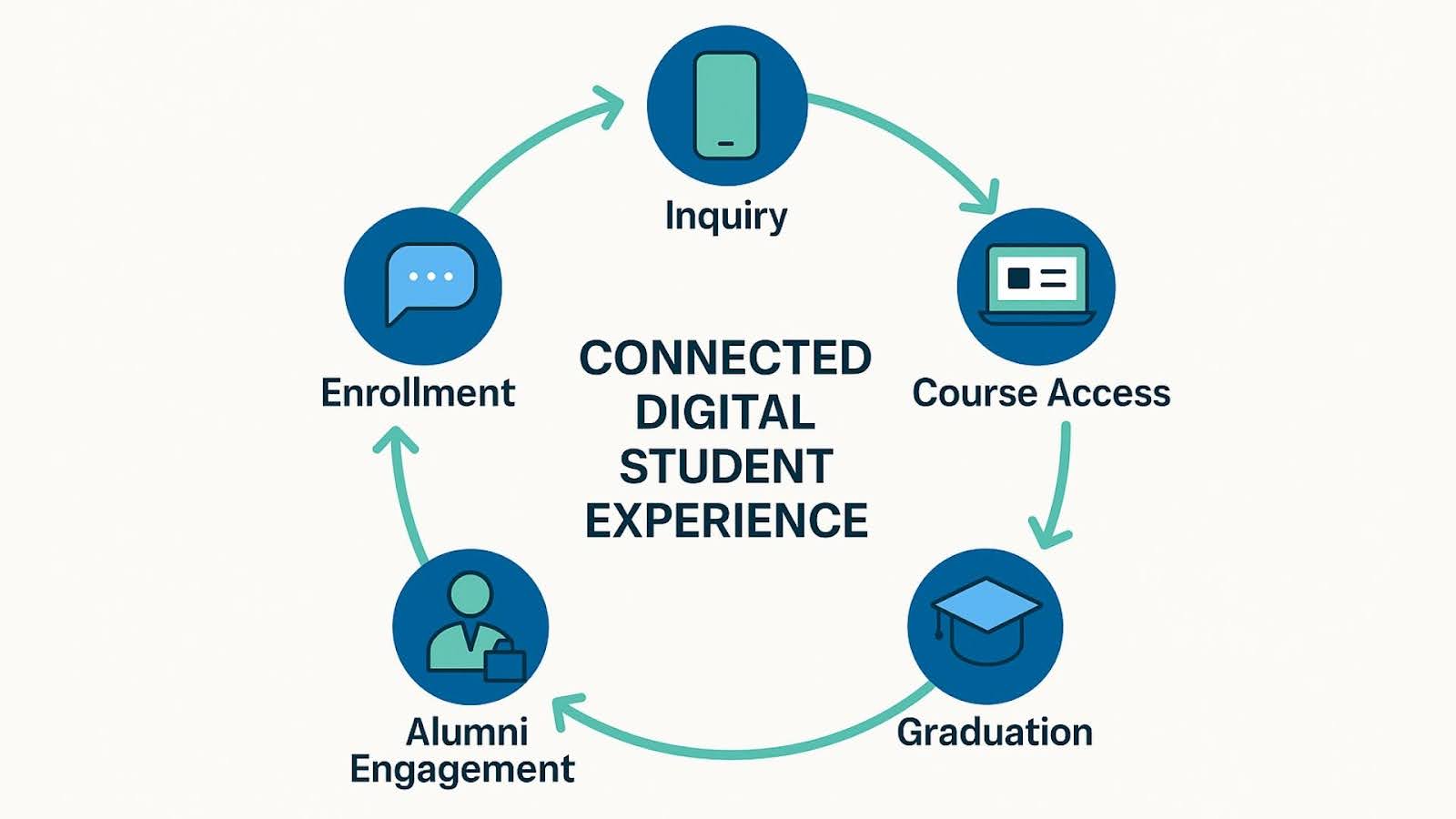
Successful institutions focus on eliminating administrative obstacles that prevent students from focusing on learning. Consider streamlining course registration, simplifying financial aid processes or creating one-stop digital portals for student services.
6. Why Is Micro-Learning Becoming Essential for Student Success?
Attention spans are shrinking, and students increasingly prefer learning in focused, digestible segments rather than lengthy lecture formats. Micro-learning breaks complex topics into smaller, manageable modules that students can complete at their own pace.
This approach benefits adult learners and working students who need to fit education around other responsibilities. Micro-learning modules can be completed during commutes, lunch breaks or other available moments, making education more accessible and sustainable.
To maintain engagement, effective micro-learning combines a variety of multimedia as teaching tools:
- Short videos
- Interactive exercises
- Simulations
- Quick assessments
Each module should have clear learning objectives and immediate application opportunities, helping students understand how the content connects to their broader goals.
Dynamic, bite-sized learning also enables more frequent assessment and feedback, helping both students and instructors identify areas that need additional attention. This proactive glance creates opportunities for just-in-time support rather than reactive remediation.
7. How Do Immersive Technologies Transform Learning Experiences?
Virtual and augmented reality technologies are moving from experimental to practical applications in higher education. These immersive technologies create learning experiences that would be impossible or impractical in traditional classroom settings.
VR applications allow students to:
- Explore historical sites
- Conduct virtual laboratory experiments
- Practice medical procedures
- Collaborate in simulated business environments
These experiences create emotional connections to learning material that enhance retention and understanding.
AR applications overlay digital information onto real-world environments, enabling students to access contextual information and interactive elements during hands-on activities. This technology proves valuable in field-based learning and technical training programs.
While implementation costs have decreased, successful adoption requires careful consideration of learning objectives and student access. The most effective implementations strategically integrate immersive elements rather than using technology for its own sake.
8. What Makes Community Building Critical for Student Engagement?
Students who feel connected to their institutional community are more likely to persist and succeed. Community building combines digital platforms with intentional programming to create multiple opportunities for inclusion and belonging.
Digital community platforms help students connect based on:
- Shared interests
- Academic programs
- Career goals
- Personal identities
These platforms should facilitate both formal academic collaboration and informal social interaction. Features like study groups, interest-based forums and virtual events help students find like-minded people within larger institutional contexts.
Peer mentoring programs leverage technology to match students with compatible mentors and provide ongoing support for these relationships. Successful programs include training for mentors, structured interaction frameworks and recognition systems that celebrate positive outcomes.
The most effective community-building strategies create multiple pathways for involvement, recognizing that different students connect through academic, social, professional or service-oriented activities. Institutions should offer diverse engagement opportunities and make it easy for students to discover options that align with their interests and availability.
9. How Can Predictive Analytics Improve Student Support Services?
By using predictive analytics, institutions can anticipate student needs and provide proactive support rather than reactive assistance. These systems analyze patterns in student behavior, academic performance and engagement to predict future challenges and opportunities.
Financial stress prediction models can identify students who may face unexpected financial hardships, enabling early intervention with emergency funding or payment plan options. Academic performance models can predict which students might benefit from tutoring services before they begin struggling in courses.
Career services departments use predictive analytics to:
- Identify optimal timing for career interventions
- Predict which students might benefit from specific programs
- Match students with relevant opportunities based on their interests and academic progress
Create actionable insights rather than overwhelming staff with data. Effective systems translate complex analytics into clear recommendations for specific interventions, making it easy for support staff to take action.
10. Why Are Flexible Learning Modalities Essential for Modern Students?
Student populations are diverse, and one-size-fits-all approaches no longer serve institutional or student needs. Flexible learning modalities accommodate different learning preferences, life circumstances and career goals while maintaining academic rigor.
- Hybrid learning combines the best elements of in-person and online instruction, enabling students to benefit from face-to-face interaction while maintaining schedule flexibility.
- Competency-based programs allow students to progress based on mastery rather than seat time, enabling accelerated completion for motivated learners.
- Modular program design enables students to combine courses and credentials from different areas to create customized educational pathways. This approach appeals to adult learners who want education that directly relates to their career goals.
Successful flexible learning strategies maintain quality standards while offering genuine choice, supported by learner engagement technology that helps institutions connect with students across multiple modalities.
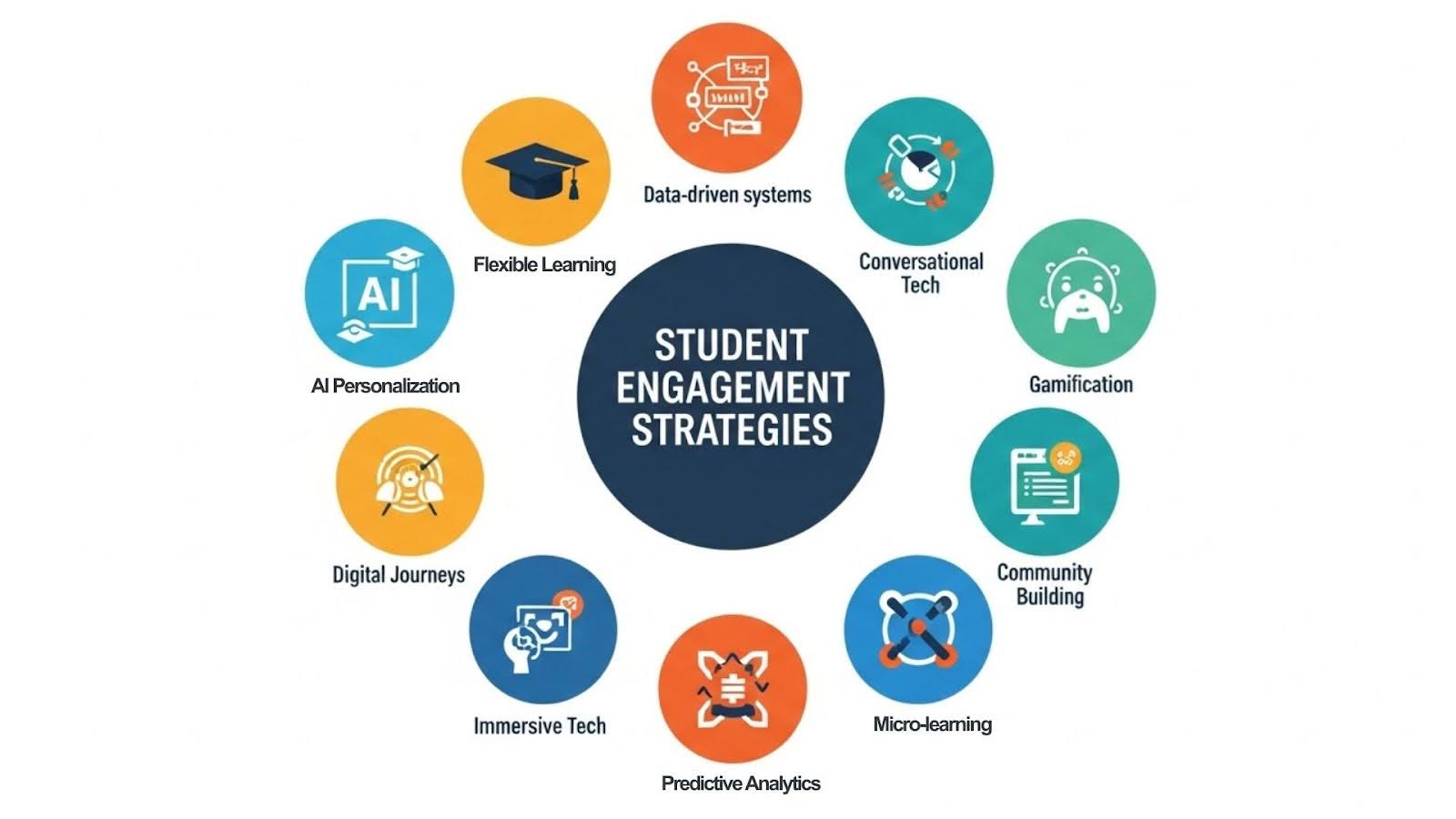
Frequently Asked Questions
What's the most cost-effective student engagement strategy for institutions with limited budgets? Start with improving digital communication systems, particularly text messaging and mobile-optimized web experiences. These implementations typically require lower upfront investments while delivering measurable improvements in student response rates and satisfaction.
How can institutions measure the success of student engagement strategies? Focus on leading indicators like communication response rates, LMS engagement metrics and event participation alongside traditional measures like retention and graduation rates. Regular student surveys provide qualitative insights that complement quantitative data.
What's the biggest mistake institutions make when implementing engagement technologies? Deploying technology without clear processes for human follow-up. Technology should enhance rather than replace human connection. Successful implementations combine automated systems with trained staff who can provide personalized support when needed.
How do engagement strategies differ for traditional versus non-traditional students? Non-traditional students often prioritize flexibility, career relevance and efficient communication, while traditional students may place higher value on community building and campus experiences. The best approaches offer multiple engagement pathways that appeal to different student populations.
Building the Future of Student Success
The institutions that thrive embrace student engagement as a comprehensive strategy rather than a collection of isolated tactics. Success requires integrating technology with human touch, using data to enable personalization at scale and creating multiple pathways for students to connect with their learning journey.
The student engagement strategies outlined here create educational experiences that prepare learners for lifelong success. When institutions implement these approaches thoughtfully, they create environments where students truly thrive.
Modern Campus provides the comprehensive platform and expertise you need to implement these strategies and create meaningful connections with learners throughout their entire educational lifecycle. Book a demo to see how Modern Campus can help transform your institution's approach to student engagement.
Last updated: November 13, 2025
